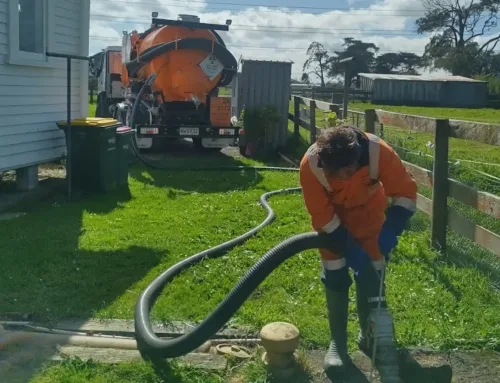Get This Report on Reclaim Waste
Get This Report on Reclaim Waste
Blog Article
Reclaim Waste Things To Know Before You Get This
Table of ContentsReclaim Waste Can Be Fun For AnyoneMore About Reclaim WasteLittle Known Facts About Reclaim Waste.Fascination About Reclaim WasteReclaim Waste - An Overview
Explore the kinds, incidents, and forms of fluid waste. Domestic sewer waste describes the waste and products from a domestic septic tank. This sort of waste is developed by human beings in homes, institutions, and other structures. This only includes septic containers that have a drainpipe area. The appropriate monitoring and disposal of residential sewage waste call for fluid waste to be moved to a sewer treatment plant where the appropriate methods and devices are related to cleanse and deal with waste.
Industrial waste usually includes possible risks, such as combustible products or a mixture of fluid and strong waste products, and calls for an advanced and in-depth disposal procedure. The disposal of commercial waste commonly involves the purification of waste before transport to make sure risk-free and proper disposal. Hazardous waste is created from byproducts and overflow of commercial procedures and manufacturing.
This type of waste can not utilize the same sewer management transportation or processes as septic or business liquids. The hazardous waste administration process requires the assessment and screening of fluid waste prior to it undertakes the disposal procedure (liquid waste removal melbourne). Overflow waste is the fluid waste that originates from runoff and excess stormwater in highly inhabited locations or cities
Runoff waste can create contamination and flooding if not handled correctly. Discover more concerning sewer cleansing and waste monitoring. Making sure proper waste monitoring can avoid disasters and lower ecological harm. Both people in household setups and experts in industrial or production sectors can profit from comprehending the processes and policies of fluid waste administration.
10 Easy Facts About Reclaim Waste Shown
Call PROS Solutions today to learn more about our waste monitoring and disposal solutions and the proper methods to take care of the fluid waste you produce.
(https://filesharingtalk.com/members/604691-reclaimwaste1)Do you understand what happens to your water when you draw the plug, purge the toilet or drain the cleaning equipment? No? Well, it's worth recognizing. This so-called 'wastewater' is not just an essential resource yet, after therapy, will be launched to our land, waterways or the sea. Used water from commodes, showers, bathrooms, kitchen sinks, laundries and commercial processes is recognized as wastewater.

water used to cool machinery or tidy plant and devices). Stormwater, a form of wastewater, is runoff that streams from agricultural and metropolitan locations such as roofings, parks, yards, roads, paths and seamless gutters into stormwater drains, after rainfall. Stormwater flows neglected straight to local creeks or rivers, at some point reaching the ocean.
Reclaim Waste Things To Know Before You Buy
In Queensland, a lot of wastewater is dealt with at sewer therapy plants. Wastewater is transferred from domestic or industrial sites through a system of drains and pump stations, referred to as sewerage reticulation, to a sewer treatment plant. Neighborhood governments develop, keep and operate most sewage treatment plants. Operators are licensed under the Environmental Protection Act 1994 to discharge treated wastewater at an acceptable environmental standard into rivers.
The Division of Natural Resources suggests city governments concerning handling, operating and keeping sewage systems and therapy plants. In unsewered areas, neighborhood governments might require homeowners to set up private or home sewage therapy systems to deal with domestic wastewater from commodes, kitchens, restrooms and laundries. The Division of Natural Resources authorises making use of house systems when they are verified to be reliable.
Most stormwater gets no treatment. In some brand-new neighborhoods, therapy of some stormwater to get rid of clutter, sand and gravel has actually begun making use of gross contaminant catches. Wastewater therapy occurs in 4 stages: Gets rid of solid issue. Bigger solids, such as plastics and other objects wrongly released to sewers, are gotten rid of when wastewater is travelled through screens.
Wastewater then moves right into large containers where solids settle and are removed as sludge. Oil and scum are skimmed from the surface. Makes use of little living microorganisms recognizes as micro-organisms to break down and eliminate continuing to be dissolved wastes and fine fragments. Micro-organisms and wastes are integrated in the sludge. Removes nitrogen and phosphorus nutrients that might cause algal blooms in our rivers and intimidate marine life.
More About Reclaim Waste
Nutrient elimination is not readily available at all sewer therapy plants since it calls for costly specialised tools. Clear liquid effluent produced after therapy may still have disease-causing micro-organisms - industrial wastewater treatment.

This normally implies wastewater has to be dealt with or pollutants eliminated before it can be discharged to waterways. Most wastewater moves right into the sewerage system. Under the Act, regional federal governments carry out approvals and permits for ecologically appropriate activities (Periods) involving wastewater releases that might have a local effect. The division administers approvals and licences to Ages including wastewater launches that could have a local or statewide impact.
The 7-Second Trick For Reclaim Waste
Surveillance provides accurate info regarding water top quality and can validate that permit problems are being satisfied. The details gotten via monitoring supplies the basis for making water top quality decisions.
Report this page